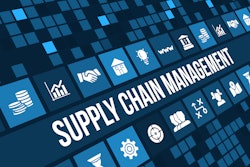
Behind every same-day delivery and real-time shipment update lies a digital workforce processing 50 billion API calls daily across global supply chains. While executives chase the latest AI trends—a market projected to surpass around $169.33 billion by 2034 —application programming interfaces (APIs) have quietly become the unsung heroes holding our global supply chains together and the backbone that makes modern commerce possible.
The modern supply chain resembles a massive orchestra where thousands of instruments must play in perfect harmony. From the moment raw materials are sourced to the final delivery confirmation on your smartphone, countless systems need to communicate seamlessly. APIs serve as the critical conduit that makes real-time supply chain orchestration possible, translating data between disparate systems faster than any human intermediary or batch driven processing ever could.
Real-time visibility: From black box to crystal ball
How does this communication happen nearly instantaneously? Envision APIs in action by considering a simple online order placed from your smartphone.
The moment you click “purchase,” APIs spring into action. Your order triggers facilitation of payment processing, inventory checks across multiple warehouses to select the fastest fulfillment route, initialization of product picking, delivery route sequencing and stock replenishment algorithms —all within milliseconds. Without APIs, each of these steps would require manual intervention or custom-built integrations that would make same-day delivery economically and logistically impossible.
Perhaps nowhere is the API advantage more evident than in real-time visibility. Historically, supply chains have operated like black boxes—once goods left one facility, their status remained uncertain until they arrived at the next checkpoint. Today's API-driven networks provide unprecedented transparency. Shipping companies share location and inventory health data through APIs, allowing retailers to track containers moving across water and land while providing customers accurate delivery windows. This visibility transforms supply chain management from reactive firefighting to proactive optimization.
The shift from opacity to transparency represents API's greatest victory. Traditional supply chains operated with 72-hour visibility gaps—the time between a container leaving Shanghai and its next trackable checkpoint. Today's API-enabled networks provide second-by-second updates across 11,000-mile journeys. The proliferation of APIs has also enabled enterprises to connect and integrate far more of their supply chain. The barriers have lowered tremendously, and that has a profound impact as organizations seek to execute their digitization, automation and supply chain visibility priorities.
Success stories: APIs in action
To understand the global impact APIs truly have in powering supply chains, let’s take a look at several success stories and ways APIs are used to empower true data intelligence.
The COVID stress test: APIs kept commerce breathing
When the pandemic shuttered factories and grounded flights, API connections proved their worth. The pharmaceutical industry's vaccine distribution showcased APIs at their most critical. Without APIs working hard behind the scenes, global vaccine distribution would have taken years instead of months.
The COVID-19 pandemic exposed both the fragility of global supply chains and the resilience that APIs could provide. When traditional communication channels failed and humans couldn't travel to manage operations personally, API connections kept critical supply lines functioning. Companies with robust API infrastructures could rapidly pivot suppliers, reroute shipments, and adjust production schedules without the lengthy delays that manual coordination would have required.
Inventory intelligence
Modern inventory management represents another API success story. Gone are the days when retailers had to choose between overstocking and stockouts. APIs enable dynamic inventory optimization, where stock levels adjust automatically based on real-time sales data, weather forecasts, social media trends, and micro demand factors within specific locations. A sporting goods retailer can automatically increase soccer ball inventory in cities hosting major matches, all through API-driven data analysis and automated procurement systems.
Poor inventory management costs retailers $1.1 trillion annually in lost sales and excess stock. APIs transform this challenge into competitive advantage through dynamic optimization that bridges 156 variables simultaneously for AI powered demand applications to rationalize into a more precise demand prediction and stocking plan.
APIs level the playing field
The democratization of sophisticated supply chain capabilities through APIs has leveled the playing field for smaller businesses. Previously, only big box giants could afford the complex IT infrastructure necessary for advanced supply chain management. Today, a small e-commerce business can access the same shipping APIs, inventory management systems, and demand forecasting tools that power enterprise operations. This democratization has fueled the explosive growth of direct-to-consumer brands and enabled entrepreneurship at unprecedented scales.
The API-as-a-Service market's growth to $13.2 billion by 2033 reflects a fundamental shift: complex supply chain capabilities once exclusive to mighty Fortune 500 companies are now accessible to any business with an internet connection. A single-person e-commerce operation can leverage the same shipping APIs, inventory optimization, and demand forecasting tools that power online marketplaces—again, lowering the barriers.
Cross-border commerce, once the domain of specialized trading companies, has become accessible to businesses of all sizes through API integrations. Currency conversion, customs documentation, tax calculations, and compliance checks now happen automatically through API connections. A small artisan in Thailand can sell directly to customers in Minnesota with the same logistical sophistication that multinational corporations employ.
The future of APIs
APIs are evolving beyond simple data exchange to enable increasingly sophisticated supply chain intelligence. Machine learning algorithms consume API data streams to predict disruptions before they occur, automatically suggesting alternative suppliers when geopolitical tensions threaten established routes. The next generation of APIs will likely incorporate Internet of Things sensors, providing granular data about product conditions throughout the supply chain journey. Supply chain planning and execution will increase in efficiency and precision as more supply chain participants, and more supply chain data is actionable through APIs.
The integration of APIs with emerging technologies promises even greater transformation. Blockchain APIs could provide immutable supply chain records, while artificial intelligence APIs might optimize routing decisions in real-time based on traffic patterns, weather conditions, and fuel prices simultaneously. In a world where consumer expectations for speed and transparency continue rising, APIs aren't just supporting supply chains—they're defining what's possible in global commerce. Those organizations that embrace this fact now will be set up for success in the future.
The next time you receive a package exactly when promised, thank the APIs that made it possible.
















